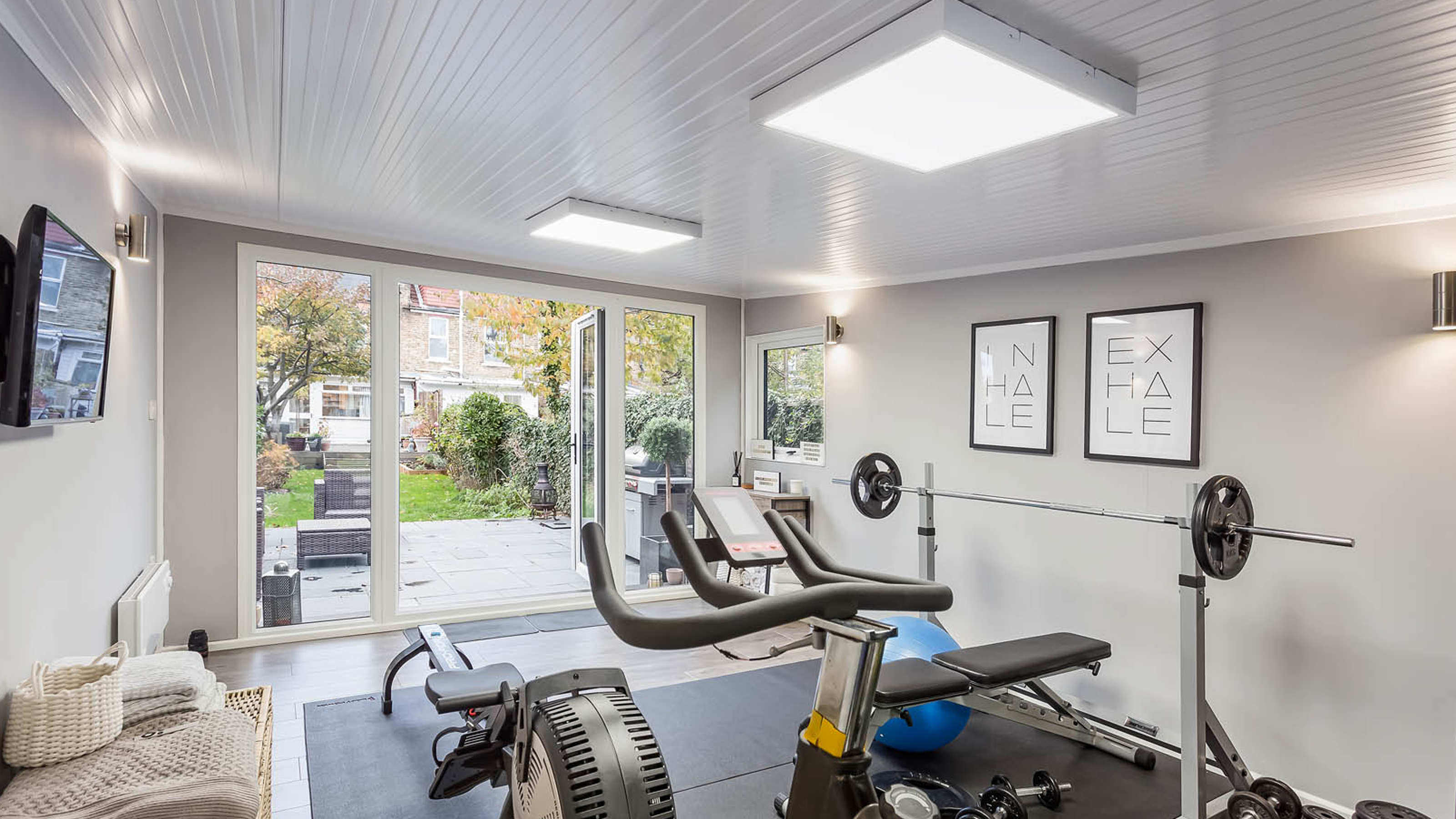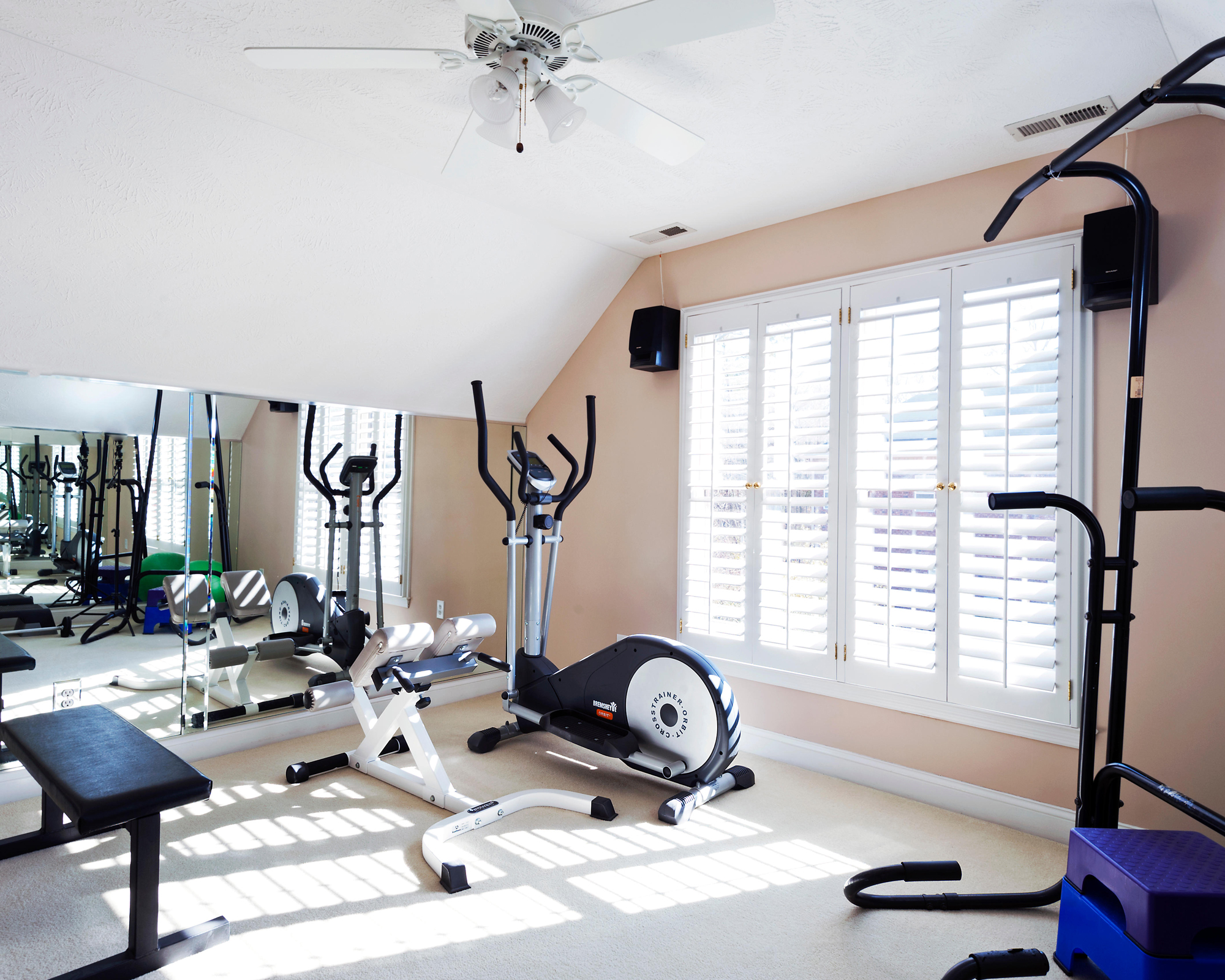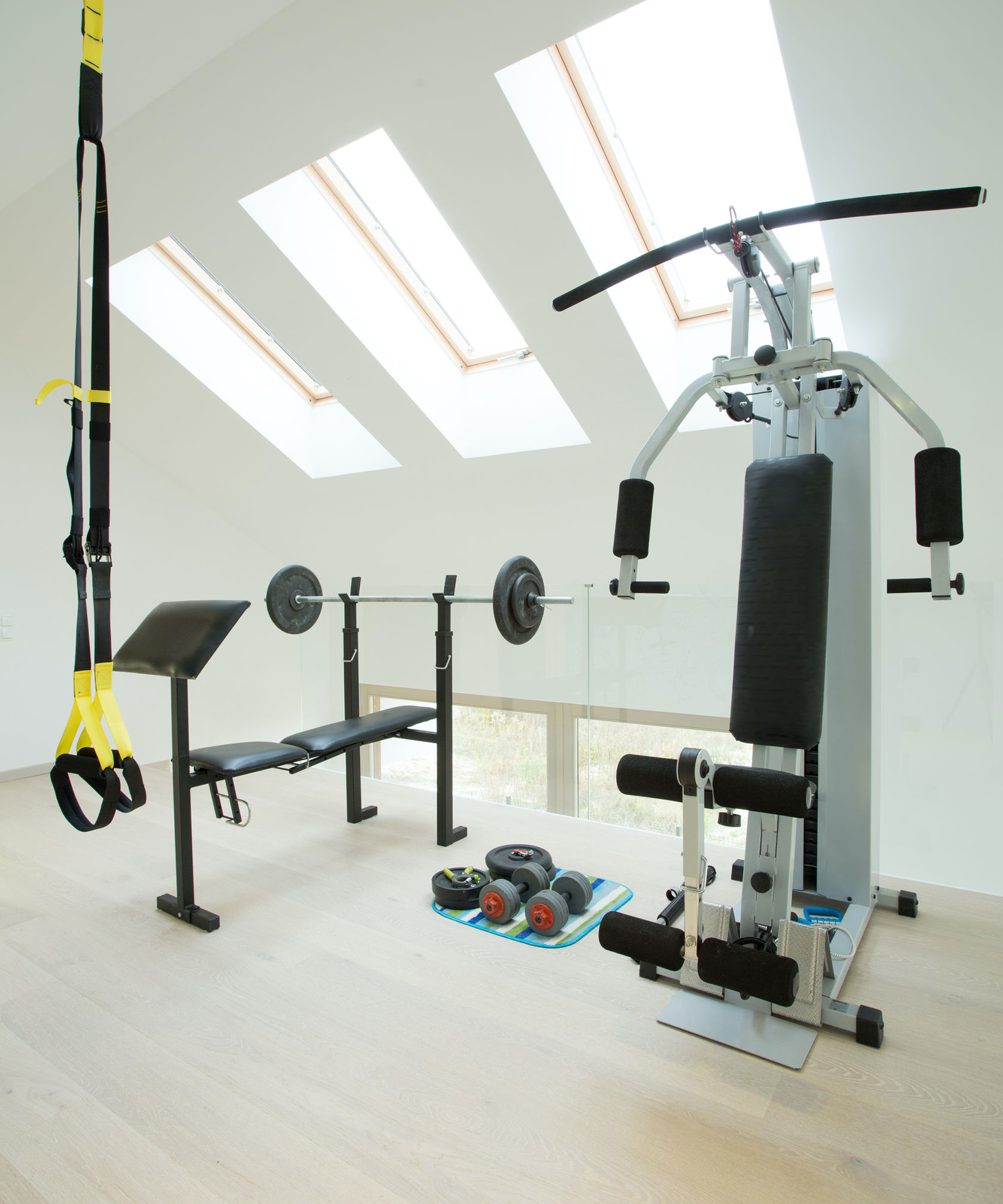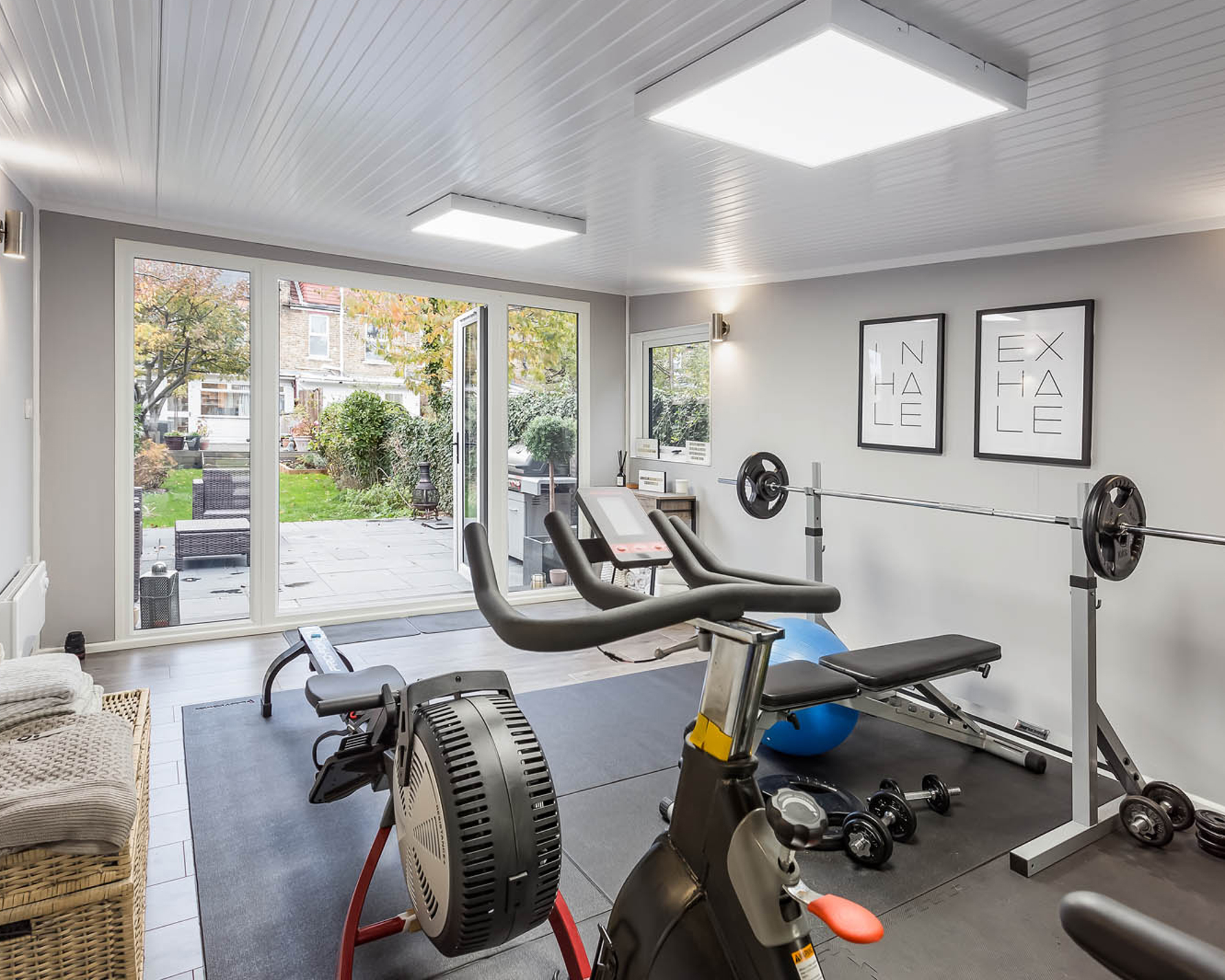Home gym lighting: the best ways to light up your workout space
This expert advice will help you make the most of your home gym lighting

Home gym lighting is an essential consideration when designing your workout space. Firstly, there's the obvious need to be able to see clearly what you're doing while working out – a challenge for windowless rooms such as garages and during dark winter afternoons. Secondly, the quantity and quality of light you get while exercising has a direct impact on your physical performance and mental being.
So, when planning your home gym ideas, make sure that lighting is factored in. Fitness and interior design experts have some useful advice for designing lighting for gyms successfully.
Home gym lighting ideas to light up your workout space
The best lighting for a home gym is the type of lighting that best addresses your needs.
We take you through the best ways to light up your home gym to amp up your workout, whether it be a calming yoga session or high intensity training.
1. Maximize on natural light, if you can

For boosting your energy levels, nothing beats natural light. So, if you have a room that has a window and is unused, it should be a major candidate for a home gym. Paul Johnson, the Founder and Editor of Complete Tri, a resource for triathletes, runners, cyclists and HIIT enthusiasts, explains that assessing the existing natural light the 'the first thing someone needs to do when lighting their home gym.'
Of course, Paul acknowledges that natural lighting 'is a moot point if you are an evening workout person' but it is 'very relevant if you workout during daytime.' If you work from home, you probably have more flexibility with your time and can work out during lunchtime or in the morning.
Having a naturally lit home gym also reduces 'the need for more lighting', if not eliminates it, making the overall design of your home gym cheaper.
Get small space home decor ideas, celeb inspiration, DIY tips and more, straight to your inbox!
Paul does recommend being aware of the possibility of having too much light in your home gym – 'sometimes people with lots of natural light actually need to find ways to cover the windows at times, so they can see the screen for workouts like connected fitness or Peloton.' If your window is south-facing, you'll likely need window treatments like blinds or shutters.
2. Recessed lighting is essential if using ceiling lighting

Skylights can be the answer to insufficient natural light in a home gym, especially in attic gyms. However, take care with the type of skylight you introduce. It needs to be far enough from you while you exercise, or you're risking an accident.
As Paul points out, 'Any gym design should take into account that you may be jumping, swinging your arms, doing burpees, etc. You don’t want lights that protrude from the ceiling.
Many people have crushed a light while swinging an exercise ball or a weight. If you are able to, use cans — those recessed lights that go up inside your ceiling.'
3. Consider layered lighting

Square 50 trimless downlight, John Cullen Lighting
If you are designing lighting for a home gym space that's windowless, or you prefer to exercise after dark, you don't have to go for a boring spotlight lighting scheme. Katie Thomas, founder of KTM Design, advises to 'think about different layers of lighting which can change the ambience of the room depending on the activity you are doing.'
Not all types of exercise require bright overhead lighting, which 'is best for using machinery to ensure that you can see what you are doing.' A combination of soft, recessed ceiling lighting panels and spotlights will give your lighting scheme more flexibility, allowing you 'to create a relaxing atmosphere when winding down in the evenings doing yoga.'
As a rule of thumb, the more home gym equipment you have, the brighter your space needs to be. A single machine and a yoga mat will benefit from a softer, more layered scheme.
4. Use daylight-imitating LED lights to boost energy

Of course, if you live somewhere with long, dark winters, and have trouble motivating yourself to work out on dark mornings/evenings, you may benefit from LED lighting that imitates daylight.
Paul highly recommends natural daylight-style lighting 'for people in far northern regions where the days can be short in winter' – 'they may help with winter energy levels.' If, for example, you've taken up exercise to combat the effects of Seasonal Affective Disorder, you might as well incorporate some daylight therapy into your workout routine.
Alex Gwilliam, Sales Manager at Green Retreats, recommends 'choosing an LED lighting option that mimics natural daylight, such as an LED panel light, to really brighten your home gym and energize your workout.'
What is the best way to light up a home gym?
If you like high-energy workouts with extensive equipment, then you'll benefit from as much natural light (or at least an effective imitation of it) as you can get.
Paul believes that 'cans are by far the best design for a workout room' – so if you have the budget for a loft conversion, you really should go for them. Failing that, full-spectrum daylight-imitating LEDs will do the trick. Think beyond basic spotlights, though – panels will give you so much more and better light.
And the worst lighting idea for a home gym? Paul's advice is to 'avoid lamps. They will tip, fall, and break. If you must use one, make sure it is strong and has a firm base.'
What LED color is best for working out?
The color of your LED lighting will have an impact on how much stimulation you get from your home gym space. Jamie Moxey, Design Consultant at Dusk Lighting, told us that 'for a home gym, ideally the Kelvin should be around 4000-6000k which is neutral, cool. Opting for this color will introduce an element of the blue light spectrum which is mentally stimulating and ideal for creating a motivating setting.'
This may be different if you are setting up a yoga studio – a warm white or even orangey candlelight-like light of 2800-3000k may be best.
As well as the color, you'll need to consider the brightness of your LED lighting (measured in lumens). Paul think that 'you actually want to have moderate brightness. Too bright, and you are going to feel like you are in a spotlight with a 1,000 lumen light shining down on you. Plus, so much fitness now is screen-based that you don’t want the light competing with it.'
So, a medium-bright, neutral-cool light will suit most home gym settings, but consider warmer and dimmer light for yoga.
Anna is a professional writer with many years of experience. She has a passion for contemporary home decor and gardening. She covers a range of topics, from practical advice to interior and garden design.